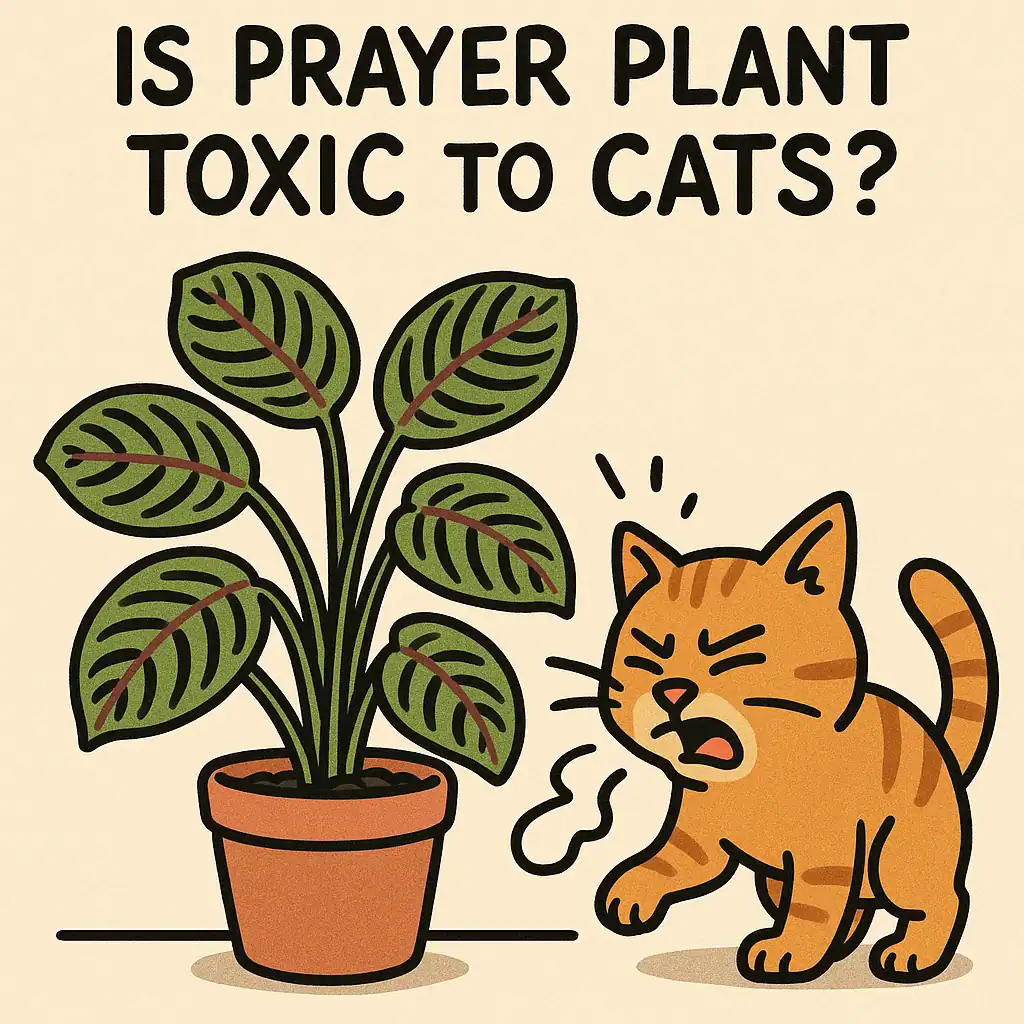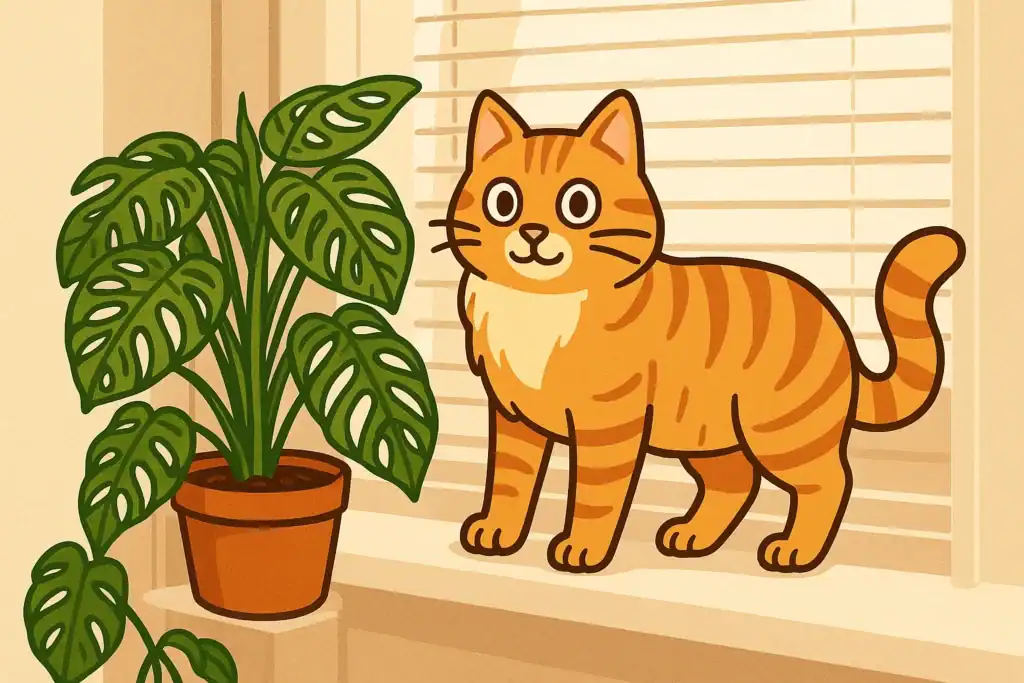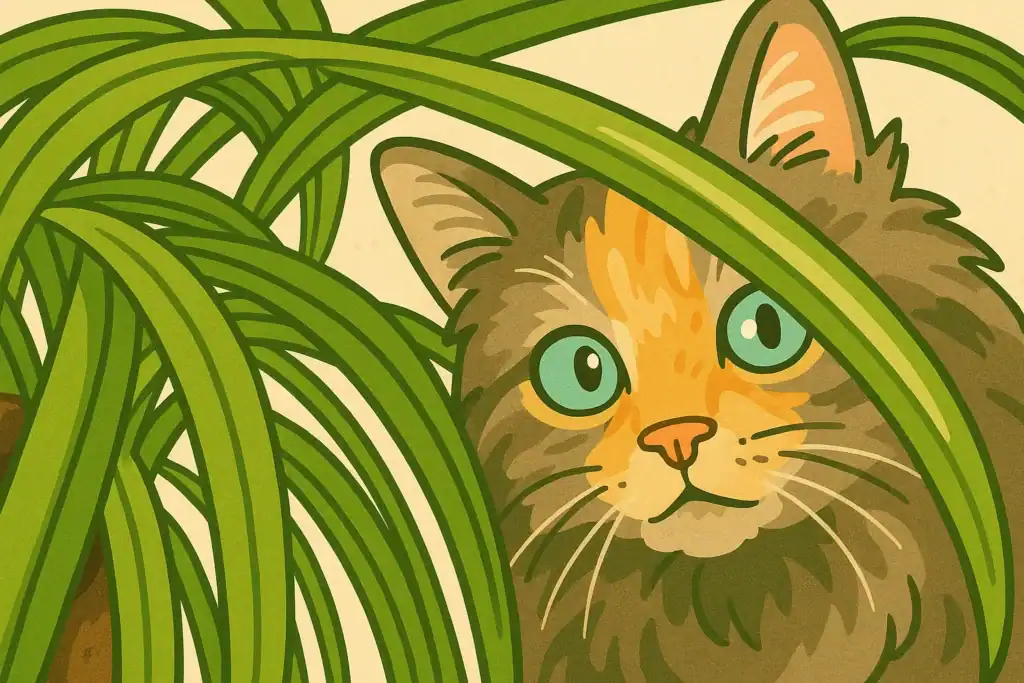As a devoted plant parent and cat enthusiast, there’s a burning question that keeps you up at night: Is prayer plant toxic to cats? You’ve fallen in love with the mesmerizing foliage of your Maranta leuconeura, also known as the prayer plant, but the thought of your curious feline companion nibbling on a leaf sends shivers down your spine. You want to create a beautiful, green oasis in your home, but not at the expense of your beloved pet’s safety. This is a common worry for many of us who juggle the joys of houseplants and furry friends. Let’s dive deep and get to the bottom of whether the stunning prayer plant is indeed a safe choice for a household with cats. Understanding if a prayer plant is toxic to cats is crucial for peace of mind and ensuring your feline friend stays happy and healthy.

Table of Contents
Absolutely! Great news for plant-loving cat owners: The prayer plant (Maranta leuconeura) is considered non-toxic to cats by major veterinary organizations and plant toxicity databases. This means if your feline friend takes a curious nibble, they are unlikely to experience severe poisoning symptoms. So, concerning Is prayer plant toxic to cats, the definitive answer is generally no.
Understanding the Prayer Plant: Maranta Leuconeura
The prayer plant, scientifically known as Maranta leuconeura, is a tropical plant native to the rainforests of Brazil. It’s a member of the Marantaceae family and is celebrated for its striking leaf patterns and unique habit of folding its leaves upwards at night, resembling praying hands, which gives it its charming common name. Popular varieties include the Red Prayer Plant (Maranta leuconeura ‘Erythroneura’) and the green-veined Maranta leuconeura ‘Kerchoveana,’ often called the Rabbit’s Foot Prayer Plant. Many cat owners specifically wonder, “Is the red prayer plant toxic to cats?” The good news is that across the Maranta leuconeura species, including the red variety, toxicity concerns for pets are minimal. This makes the prayer plant cat friendly, a significant relief for many. The question, is prayer plant toxic to cats, is a frequent one, and the answer points towards their general safety.
The Verdict: Is Prayer Plant Toxic to Cats?
Based on extensive data and reports from reputable sources like the American Society for the Prevention of Cruelty to Animals (ASPCA) and the Pet Poison Helpline, the consensus is clear: Maranta leuconeura, the prayer plant, is non-toxic to cats. This is fantastic news for those asking, is prayer plant toxic to cats. If your cat chews on a leaf, they are unlikely to suffer from poisoning. This means you can likely display your stunning prayer plant without constant worry. Knowing whether a prayer plant pet safe is a major factor in choosing houseplants for your home. The fact that the prayer plant is safe for cats makes it a highly recommended option for pet households. The general understanding is that are maranta plants poisonous to cats? The answer is generally a resounding ‘no.’
What “Non-Toxic” Actually Means
When a plant is labeled as “non-toxic” to cats, it means that ingestion is unlikely to cause severe, life-threatening poisoning. However, it doesn’t necessarily mean there will be no reaction at all. Even with non-toxic plants, some sensitive cats might experience mild, temporary digestive upset if significant amounts are consumed.
Possible, though uncommon and mild, reactions could include:
- Mild vomiting
- Diarrhea
- Upset stomach
These symptoms are usually fleeting and resolve on their own without veterinary intervention. This level of reaction is far less severe than what is caused by truly poisonous plants. So, while addressing “Is prayer plant toxic to cats?”, it’s important to understand the nuance of “non-toxic.” It means minimal risk, not zero possibility of any reaction. This gives context to queries like prayer plant toxic, meaning ‘toxic’ in a severe sense is not applicable. It firmly establishes that the prayer plant safe for cats is generally accepted.
Why is the Prayer Plant Safe for Cats?
Unlike many common houseplants that contain toxic compounds like calcium oxalates (found in plants like Peace Lilies and Pothos) or other harmful alkaloids, the prayer plant does not possess these irritating or poisonous substances. This is why the maranta toxic to cats concern is generally unfounded. Their chemical composition doesn’t include elements known to be harmful to felines. This makes the maranta pet safe and a preferred choice for many cat owners. The question of “Is the red prayer plant toxic to cats?” extends to the lack of problematic compounds in specific cultivars as well.
Still Worried? Preventing Your Cat from Eating Houseplants
While the news about the prayer plant is good, it’s natural to still want to discourage your cat from munching on your beloved foliage, toxic or not. Excessive nibbling can damage your plants and, as mentioned, could still cause mild tummy upset in very sensitive individuals.
Here are some strategies to keep your cats away from your prayer plants:
- Provide Alternatives: Ensure your cat has plenty of appropriate things to chew on, like cat grass, catnip toys, or silvervine sticks. This can satisfy their natural instinct to mouth and chew on things.
- Placement is Key: Elevate your prayer plants on high shelves, hanging baskets, or in rooms that are less accessible to your cat. Remember, agile cats can jump surprisingly high!
- Bitter Sprays: Use a pet-safe bitter spray on the leaves. Most cats dislike the taste and will avoid the plant after a few attempts. Always test a small area first to ensure it doesn’t harm the plant’s leaves.
- Supervised Interactions: When you first bring a prayer plant (or any new plant) home, supervise your cat around it. Gently redirect them if they show interest in chewing.
- Engage and Play: Sometimes, plant chewing is a sign of boredom. Ensure your cat gets enough playtime and mental stimulation.
- Cover Soil: Some cats are attracted to the soil. Cover the top of the soil with large pebbles or a decorative mesh to make it less appealing.
Implementing these preventative measures can help keep both your prayer plant cats happy and your green decor intact. It’s proactive steps like these that confirm the prayer plant is safe for cats and minimizes any potential issues. Even though the answer to is prayer plant toxic to cats is reassuringly “no,” prevention is still the best policy. This also applies when considering are maranta plants poisonous to cats – while not poisonous, prevention is wise.

When to Contact Your Veterinarian
Even though the prayer plant is considered non-toxic, it’s always wise to err on the side of caution. If your cat has ingested any part of any plant and is showing concerning symptoms, contact your veterinarian immediately.
Symptoms that would warrant a call to your vet include:
- Persistent vomiting
- Severe diarrhea
- Lethargy or unusual weakness
- Loss of appetite
- Changes in behavior
- Difficulty breathing
- Swelling around the mouth or tongue
While these symptoms are highly unlikely with a prayer plant, they are indicators of potential plant poisoning from other sources or unrelated health issues. Having the Plant ID ready for your vet is also helpful. Understanding why is prayer plant toxic to cats gets a negative answer is important, but recognizing when to seek help for any plant ingestion is crucial. This underscores the difference between a prayer plant safe for cats and other potentially harmful plants.
Comparing Prayer Plants to Other Common Houseplants
It’s helpful to see where the prayer plant stands compared to other popular houseplants in terms of feline safety. This context strengthens the understanding of “Is prayer plant toxic to cats?” and why it’s considered a good choice for pet owners.
| Plant Name | Scientific Name | Toxicity to Cats | Notes |
|---|---|---|---|
| Prayer Plant | Maranta leuconeura | Non-Toxic | Safe for cats, minimal risk of digestive upset. |
| Peace Lily | Spathiphyllum spp. | Toxic | Contains calcium oxalates, causes mouth irritation, vomiting. |
| Pothos | Epipremnum aureum | Toxic | Contains calcium oxalates, causes mouth irritation, vomiting. |
| Snake Plant | Sansevieria trifasciata | Mildly Toxic | Causes nausea, vomiting, diarrhea if ingested. |
| ZZ Plant | Zamioculcas zamiifolia | Toxic | Contains calcium oxalates, causes severe irritation and digestive issues. |
| Spider Plant | Chlorophytum comosum | Non-Toxic | Safe for cats, may have mild hallucinogenic effects, leading to chewing. |
As you can see, the maranta toxic to cats status is happily non-existent, placing it in the same safe category as the popular Spider Plant. This comparison reinforces why many opt for the prayer plant when looking for pet-friendly greenery. It demonstrates clearly that prayer plant pet safe is verifiable. While are maranta plants poisonous to cats is a valid question, comparing them shows they are among the safest options.

FAQs: Is Prayer Plant Toxic to Cats?
Here are some common questions people ask about prayer plants and feline safety:
Q1: Is prayer plant toxic to cats?
A1: No, the prayer plant (Maranta leuconeura) is widely considered non-toxic to cats by veterinary experts.
Q2: Is the red prayer plant toxic to cats?
A2: No, the Red Prayer Plant (Maranta leuconeura ‘Erythroneura’) is also considered non-toxic to cats, just like other Maranta leuconeura varieties.
Q3: Are maranta plants poisonous to cats?
A3: Generally, no. Plants in the Maranta genus, specifically Maranta leuconeura (the common prayer plant), are listed as non-toxic to cats.
Q4: What happens if a cat eats a prayer plant leaf?
A4: In most cases, nothing happens. Some sensitive cats might experience mild, temporary digestive upset like vomiting or diarrhea, but this is uncommon and not dangerous.
Q5: Is prayer plant safe for cats according to the ASPCA?
A5: Yes, the ASPCA lists the prayer plant (Maranta leuconeura) as non-toxic to cats (and dogs and horses).
Q6: Is the prayer plant cat friendly?
A6: Yes, because it is non-toxic, the prayer plant is considered a cat-friendly houseplant.
Q7: Is a prayer plant toxic compared to other houseplants like Pothos?
A7: No, a prayer plant is non-toxic, while Pothos contains calcium oxalates and is considered toxic to cats.
Q8: Does “maranta pet safe” mean cats can eat it freely?
A8: While non-toxic, it’s best to discourage cats from eating large amounts of any plant, including the prayer plant, to avoid potential mild tummy upset and keep your plant looking its best. “Pet safe” means it won’t cause severe poisoning.
These questions and answers reiterate the low risk associated with the prayer plant and address the core concern of is prayer plant toxic to cats. They provide quick, reliable information, ideal for featured snippets. They also integrate related questions about red prayer plant toxic to cats, maranta toxic to cats, prayer plant pet safe, and prayer plant safe for cats.
Conclusion: Enjoy Your Prayer Plant and Your Cat
Rest easy, fellow plant and cat lover! The answer to is prayer plant toxic to cats is a reassuring no. The beautiful Maranta leuconeura is considered a non-toxic plant, making it a safe addition to most households with felines. While discouraging any plant-eating behavior is always a good idea to protect your plants and avoid potential mild tummy upset, you don’t need to live in fear of severe poisoning from your prayer plant.
Knowing that the prayer plant is safe for cats means you can enjoy its unique beauty and fascinating leaf movements without constant worry. By taking simple steps to redirect your cat’s curiosity and providing alternative chewing options, you can successfully create a harmonious living space for both your lush greenery and your purring companion. So go ahead, admire your prayer plant cats – your feline friend is generally safe around this stunning houseplant. This confirms the maranta pet safe status and puts to rest the main concern: are maranta plants poisonous to cats? The answer continues to be overwhelmingly positive for cat owners.
Check This Post :
Still curious about other plants? Check out our latest pet safety posts like Is Aglaonema Toxic to Cats? and Are Lemon Trees Poisonous to Cats? – both packed with info for cat owners in 2025




